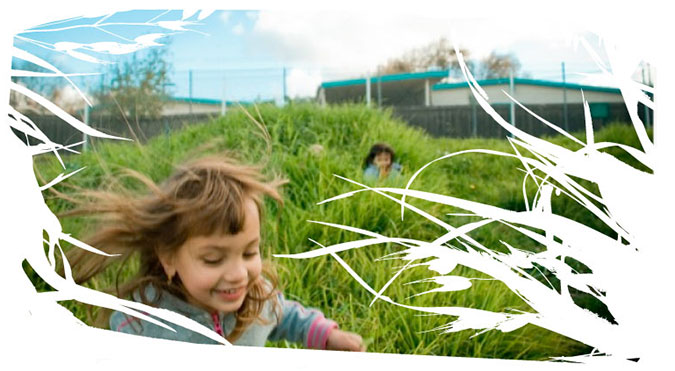
Network and Regional Movement
Inspired by Richard Louv’s book Last Child in the Woods, the San Francisco Bay Area children and nature movement began shortly after the national movement emerged to reconnect children with nature. The national movement has now grown to over a hundred initiatives across the US and Canada with an international movement gaining momentum.
The Children in Nature Collaborative is made up of members of the community engaged in connecting children with the natural world – health professionals, environmentalists, teachers, parents, farmers, businesses, civic partners and community activists.
Currently at a critical milestone, the Children in Nature Collaborative is developing capacities for long-term change through network development and open source approaches – giving visibility to the web of relationships and actions that are moving us toward a cultural shift and world in which all children play, learn, and grow with nature in their everyday lives.
Our current focus on network development is aligned with our original intention of a grassroots movement to create more effective strategies, leadership, and resources by cultivating broad leadership, developing relationships across organizations, and supporting self-organizing. Paul Hawken, author of Blessed Unrest, offers a similar perspective:
“To succeed requires ubiquity, a network of informants, a conspiracy of social imaginaries, groups that cultivate new knowledge, share it, seek information elsewhere, and provide it to agencies and citizens who need it.”
The obstacles in connecting with nature are the same as those that separate us from each other and our deeper selves. Increasingly our work demands an inner shift to lead collaboratively, cooperatively and collectively — both inside and outside of organizational structures.
People, relationships, and shared values are fundamental in building trust, developing capacities, and working as peers.
We have created more awareness and visibility of the patterns of our relationships through network mapping. In our developing practice of ‘network weaving’, we are developing ways to support networks to increase the flow of connections and resources.
Our partners often self-organize in response to opportunities – like artists, partners recombine the talents and expertise in the network in new ways to collaborate on emerging projects. Actions ripple across the network, with experiments and smaller projects offering practice fields for larger work and collaboration on higher leverage points or long-term development.
